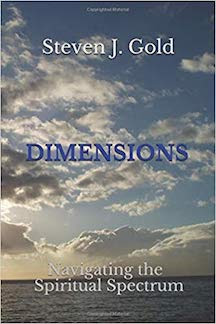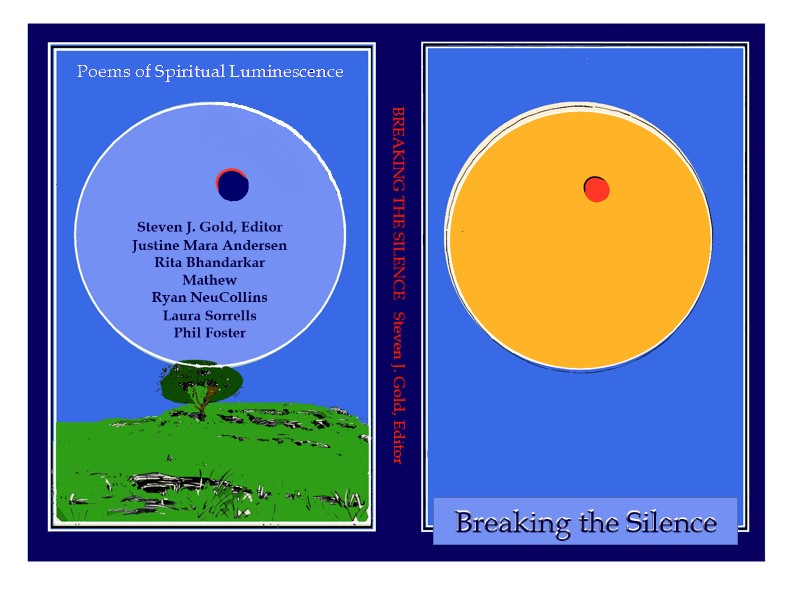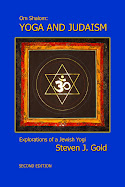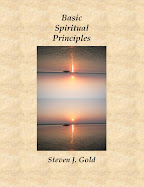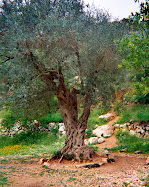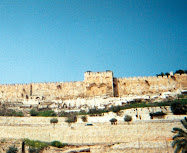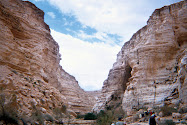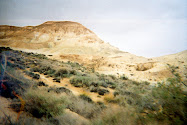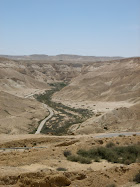Quote of the Week 419 - Listend/Hearing for Non-material Sustenance
Quote of the Week 419 - Listening/Hearing for Non-material Sustenance
Every one who is thirsty, come and drink. He who has no money, come, buy and eat. Come, buy wine and milk without money and without price. Why do you spend your money for that which is not bread and your labor for that which does not satisfy? Listen carefully to Me, and eat what is good. Let your soul delight in abundance. Incline your ear, and come to Me. Hear, that your soul will live…
--Isaiah 55:1-3, The Living Torah translation by Rabbi Aryeh Kaplan
Meditation (Click your selection, scroll down to view it)
- Audio Link: Interview - You Cannot Avoid Mystery; Eastern Meditation
- Audio Link: A Foundation for a Fruitful Meditation Practice: Science of Breath/Pranayama/Relaxation - Theory and Practice
- Audio Link: (Scroll to 11/04/18 entry) The Breath and Life Force; Guided Meditation - I Am an Empty Shell, Therefore I Am Full, etc.
- Meditation Basics - Expanded Version
- Meditation Basics - Condensed Version
- Mantra Meditation Basics
- Nada Meditation - Anahata/The Unstruck Sound
- Jewish Yoga Meditation
- Hebrew Mantras
- Hebrew Mantras, Part Two
- Hebrew Mantras, Part Three
- Hebrew Mantras - Adonai Hineni
- Healing Meditation: Ruach El Shaddai/Breath of Balance
- Meditating, Eating and Sleeping
- Shortcuts to Spiritual Development?
- Audio Link: Guided Meditation - I Am and Empty Shell, Therefore I Am Full; A Meditation on Emptiness and Dark Luminescence Based on the Opening Lines of Genesis
- Guided Meditation: The Stage
- Guided Meditation: I Am an Empty Shell, Therefore I Am Full; A Meditation on Emptiness and Dark Luminescence Based on the Opening Lines of Genesis
- Guided Meditation: The Rod, The Staff, and The Star
- Torah-Veda Meditation Class Site
- Interspiritual Contemplative Group
CURRENT TEACHING SESSIONS
Saturday, March 27, 2010
The Ten Plagues Passover Thoughts
As we know, the traditional Seder includes a description of the ten plagues that were inflicted on the Egyptian oppressors prior to the release/escape of the Israelites from their bondage. I have not found much discussion about the significance of each particular plague either in the Haggadah or in traditional sources, and usually, what discussion there is focuses on the suffering endured by the Egyptians caused by the plagues.
During a group study of these events a few years back, it suddenly dawned upon me that we are possibly missing an important lesson by not focusing on the impact on the consciousness of the Israelite slaves who witnessed these events. Were these events merely to inflict suffering on the Egyptians and illustrate to them the superiority of the Hebrew God and the protection God afforded to His People? What about the effect on the consciousness of these people? Perhaps witnessing these events was important as a preparation for this people which was about to emerge as a newly independent nation. Perhaps the forty years of wandering in the dessert was necessary in order for this people to adequately digest and absorb the inner significance of these events into their collective and individual psyches before they would be ready to enter the Promised Land. What was the significance and nature of each of these plagues? How were they intended to impact and impress the people witnessing them? How are they intended to impact and impress the consciousness of the people reciting them in subsequent Seders year-in-and-year-out? They involve water turning into blood, pestilence in the form of amphibians, insects, land animals, disease affecting livestock, boils affecting humans and livestock, hail with thunder and lightning, locust swarms, darkness, and finally, the death of all first-borns.
Traditional sources claim that each plague took a total of four weeks. There was first a warning issued by Moses, with the actual plague starting three weeks after the warning, and generally lasting for one week. The first nine are noted by traditional authorities to run in cycles of three. The first two of each group of three are preceded by a warning from Moses, giving Pharaoh a chance to comply with Moses’ request to let the people go and thus avoid the plague, while the third one commences without warning as punishment for Pharaoh breaking earlier promises. This parallels the time of the human gestational period of nine months, divided into three trimesters, so perhaps these can be seen as figurative stages of development in the womb in preparation for birth.
Why ten plagues? Any correlation with the ten sephirot and the ten commandments?
There is much food for thought and pondering here. So think about these things as you’re munching on your matzos, marror, charoset, and downing your kosher for Passover wine!
Happy Passover!
Thursday, March 25, 2010
Quote of the Week 130 - Bushes Afire with God
Earth’s crammed with heaven. And every common bush afire with God. But only he who sees takes off his shoes.
--Elizabeth Barrett Browning
Sunday, March 21, 2010
The Burning/Unburnt Bush
On a recent visit to the Pike Market in Seattle, I was attracted to a booth selling crafted tiles featuring symbols from various world spiritual/religious traditions. They were all very beautifully done, but what particularly caught my eye was a depiction of the burning bush in the Judaica collection. All of a sudden the deep significance of this particular image hit me in a way it never had before. Certainly, the other Judaica images displayed, the menorah and the Star of David, are much more well-known and more often utilized in depicting Judaism, but when I saw the burning bush, I realized what a spiritually powerful image it is. The menorah came later, and the star later still (and is not unique to Judaism), but the burning bush is more primordial and in some aspects more quintessential.
It came to me in a flash of insight that what was so special was generally overlooked by traditional sources discussing this event and symbol, partly due to the emphasis on the bush. The focus has generally been on the fact that there was something special about the bush, because it was burning, but not being consumed. So that was some special bush! It was burning, but it really wasn’t burning, because it wasn’t being consumed. I did a little bit of quick Internet research, and found that some strains in Eastern Orthodoxy espouse a significance similar to my revelation, referring to this as the event of “The Unburnt Bush”.
In the revelation of the unburnt bush, the bush in some sense is incidental. The real significance concerns the nature of the flame, the fire, not the bush. What is extraordinary about this flame/fire is that it is not dependent on fuel (why the bush was not consumed), but rather depicts the foundational source of fuel and all existence. The first word in the Rig Veda, the oldest of all of the Vedas, is Agni, which means fire, which to me is what is depicted in the burning bush, the same Divine primordial fire from which emanates both Divine Light and Divine Sound, the source materials for creation.
There is nothing extraordinary about the bush. It is not the source for the fire, but just a contrast background for its appearance. I began pondering about why have the bush at all? The fire could have appeared independently, and the event would have become known as the event of The Eternal Flame or Holy Fire or something like that. So why the bush? Why the bush? What purpose does it serve in this depiction? Hmm…And then it came to me. If the flame/fire appeared independently, then those hearing the story might still have assumed that it was more or less like any other flame/fire, even if it appeared that its source was supernatural or miraculous, as it appeared to have no normal fuel. The bush was utilized to illustrate that not only was the source of the flame other-worldly, but also the very nature of the flame was other-worldly. This was no ordinary fire, for it was the fire of creation, not of destruction. It did not require fuel as its origin, and it did not consume fuel for its sustenance. The Hebrew word used for it in the Torah describing the event of the burning bush in Exodus is “eish”. A derivative is earlier used in describing man and woman in Genesis as “ish” and “isha”. Even earlier in Genesis, another derivative of “eish/fire” is used in combination with the word for water (mayim) to form the word for heaven and the firmament dividing heaven from earth (shamayim). So this creating, sustaining, non-consuming Divine Fire that appears in the burning bush also exists as a core element in Human Being and in Heaven. There is nothing unusual about the bush itself, other than that it helped to illustrate the unusual nature of the fire, and that it could coexist with the fire, just as heaven, earth and life coexist with the fire.
Thursday, March 18, 2010
Quotes of the Week 129 - Despair
Despair is the only cure for illusion. Without despair we cannot transfer our allegiance to reality – it is a kind of a mourning period for our fantasies. Some people do not survive this despair, but no major change within a person can occur without it.
--Philip Slater, as quoted in The Sun magazine, March 2010
Through desperation, liberation.
--Steven J. Gold
Thursday, March 11, 2010
Quotes of the Week 128 - The Sources of Artistic Expression
One has to have a bit of neurosis to go on being an artist. A balanced human seldom produces art. It’s that imbalance which impels us.
--Beverly Pepper, as quoted in The Sun magazine, March 2010
The most beautiful paintings and sculptures, the greatest poetry, have not always been born from torment or bitterness. Often they have sprung from contemplation, from joy, from an instinct or wonder toward all things. To create from joy, to create from wonder, demands a continual discipline, a great compassion…With time and sincerity, you will discover a way to work and write that does not harm you spiritually, that does not tempt you to vanity, that is the deepest expression of your spirituality You will find a voice that is not your voice only, but the voice of Reality itself…If you can be empty enough, that voice can speak through you. If you can be humble enough, that voice can inhabit you and use you.
--Thuksey Rinpoche, as quoted in The Sun magazine, March 2010
Sunday, March 7, 2010
www.sumon.com
I wanted to put a good word in for this retailer, www.sumon.com.
While we were in Seattle over the December holidays, we saw these items for sale at a booth at the Pike Market. They produce beautiful bas-relief type of tile renderings of symbols from the world's major spiritual/religious traditions. Check them out. You can get there by clicking on the title to this post.
Thursday, March 4, 2010
Quote of the Week 127 - It
I cannot say I know it;
Nor can I say I do not know it;
Beyond knowing and not knowing It is.
-- Kena Upanishad, as contained in The Practical Vedanta of Swami Rama Tirtha, Edited by Brandt Dayton
Monday, March 1, 2010
AndThouShaltRead.com
I have recently entered into an association with a small online retailer that specializes in Judaica, www.andthoushaltread.com, to carry my book, Yoga and Judaism, Second Edition. I ask anyone who might normally shop at big online retailers to consider supporting this small entrepreneurship by making your purchase of my book through them, and to check them out for other Judaica items. They also will give 10% of all sales as a credit to any synagogue or religious school of the purchaser’s choosing (they carry a lot of religious school educational materials). You can get there by clicking on the title to this post.

